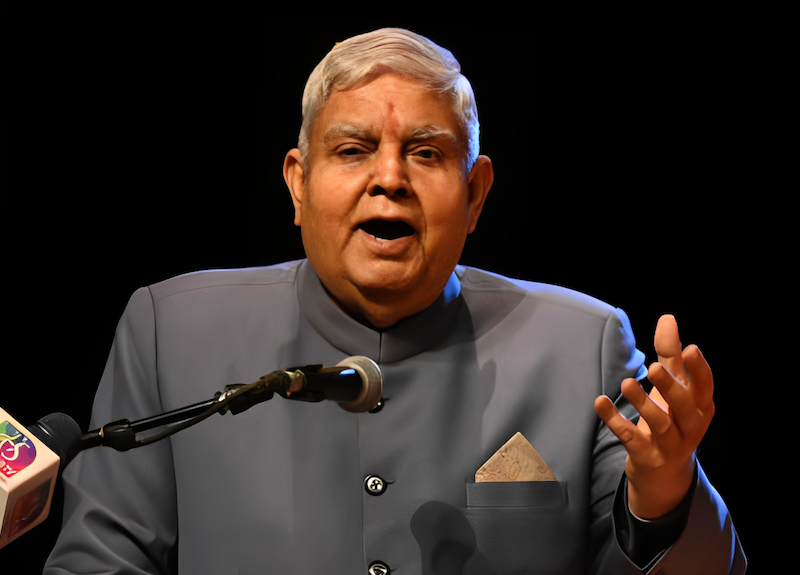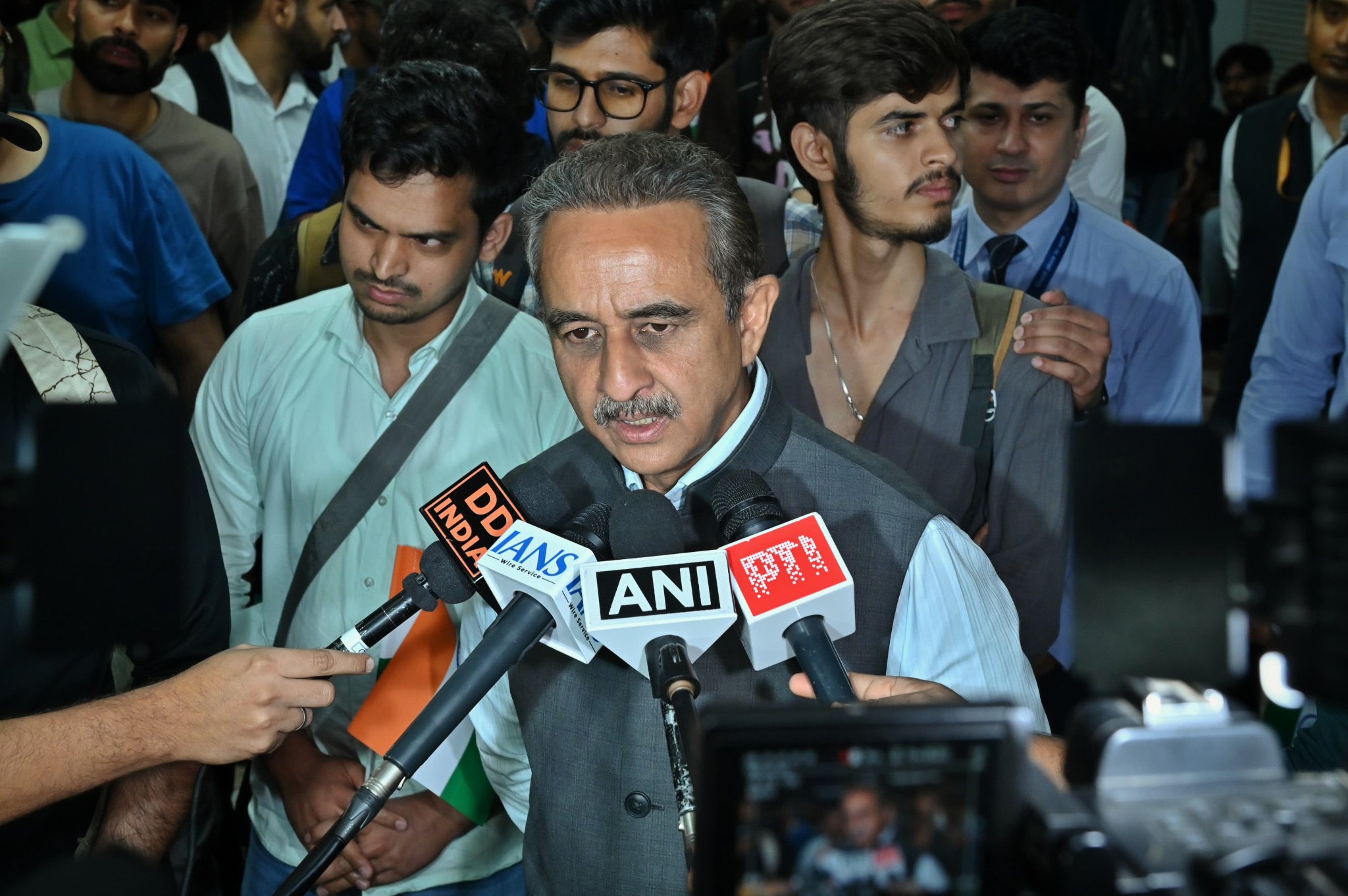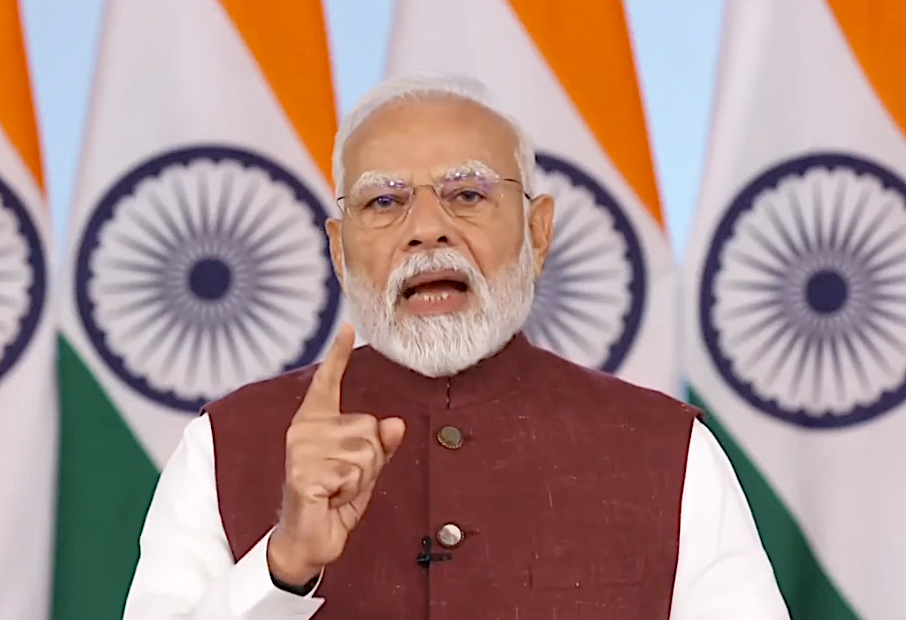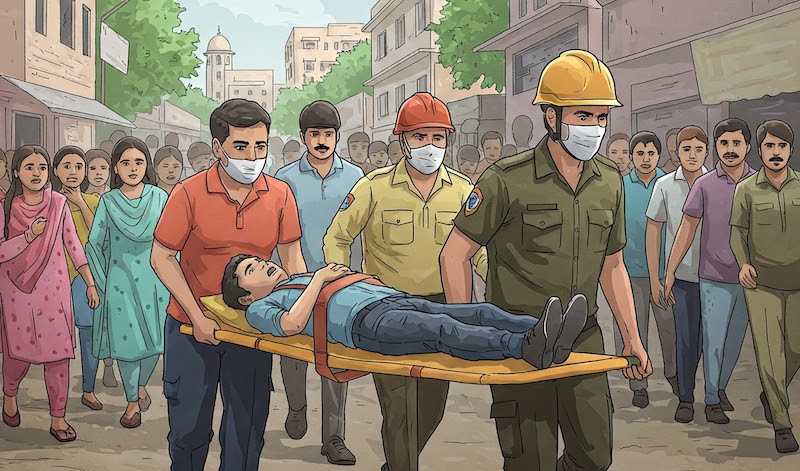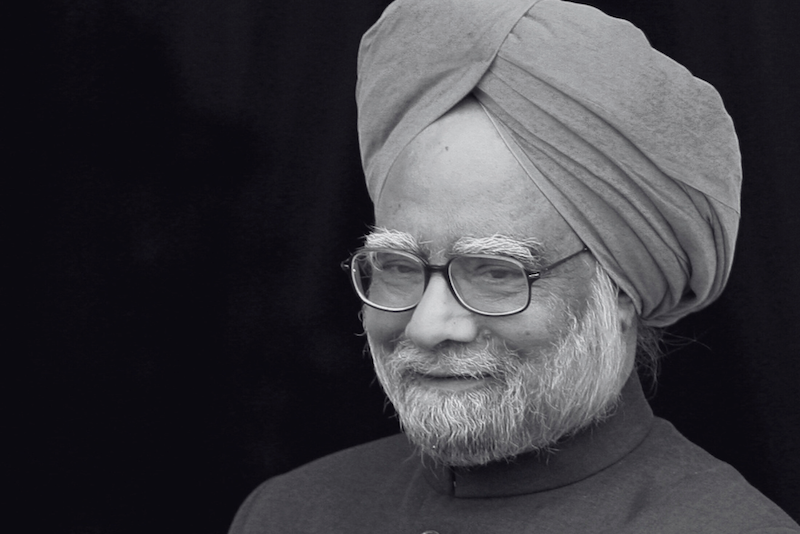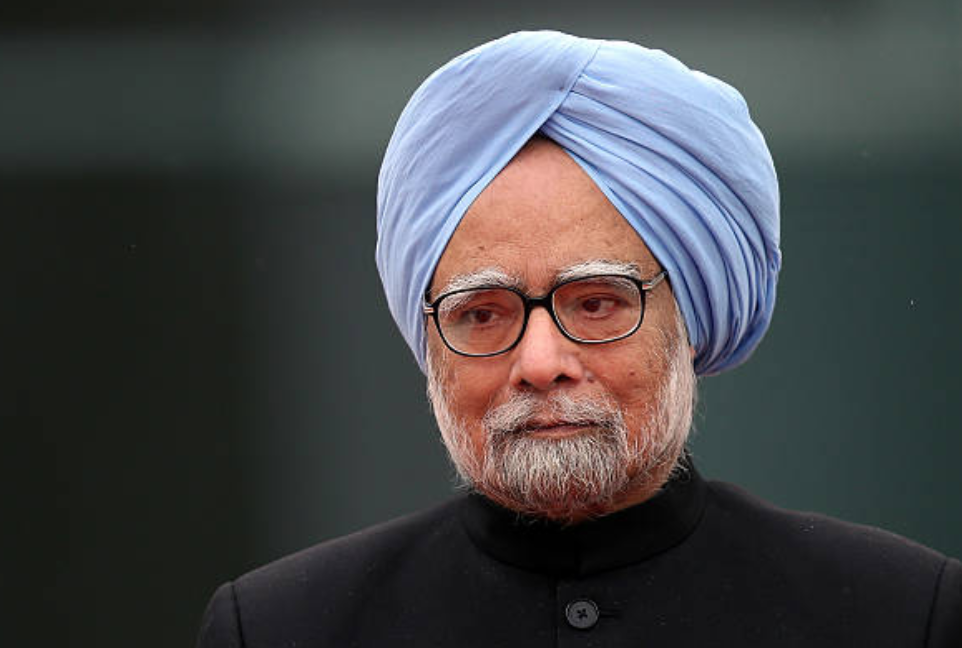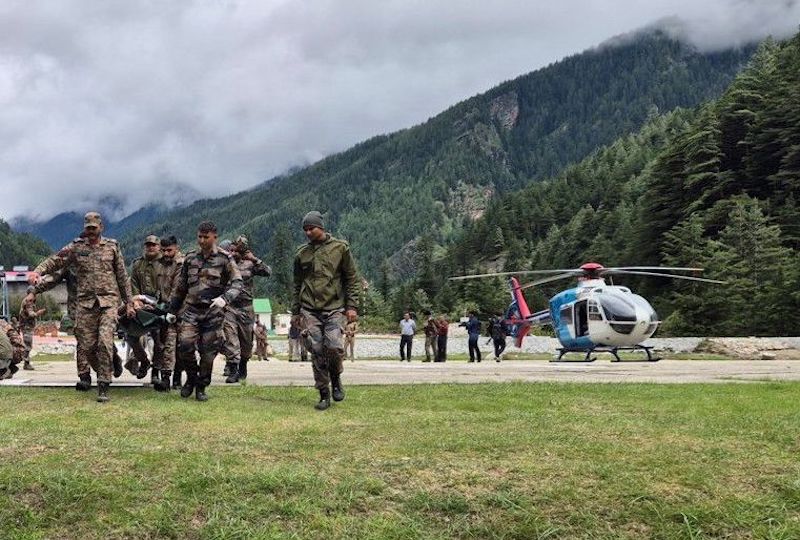 Soldiers rush an injured person to a hospital after a successful evacuation by a chopper in Uttarkashi. (Photo: Indian Army)
Soldiers rush an injured person to a hospital after a successful evacuation by a chopper in Uttarkashi. (Photo: Indian Army)
Dehradun/New Delhi: Rescue operations entered their third day on Thursday as authorities continued efforts to locate dozens of missing people following catastrophic flash floods that devastated Dharali village in Uttarakhand’s Uttarkashi district. The death toll has risen to five, while officials report that between 50 and 100 people remain unaccounted for after Tuesday’s disaster.
As India Sentinels had reported earlier, the calamity began on Tuesday afternoon when a cloudburst in the upper catchment area of the Kheer Ganga river triggered massive flash floods that completely destroyed Dharali village, a crucial stop on the pilgrim route to Gangotri Dham. The disaster has prompted one of the most comprehensive multi-agency rescue operations in Uttarakhand’s recent history.
Rescue and evacuation efforts facing challenges
Rescue teams have successfully evacuated 409 people from disaster-affected areas, according to the Uttarakhand’s State Disaster Management Authority. The evacuated individuals include 274 people transported from Gangotri and surrounding areas to Harsil, comprising pilgrims from across India – 131 from Gujarat, 123 from Maharashtra, 21 from Madhya Pradesh, and smaller groups from other states.
However, rescue efforts face significant obstacles. The floods destroyed a 100-metre iron bridge, severing road connectivity to 12 villages and forcing rescue teams to rely entirely on helicopter operations. Multiple locations including Bartwari, Linchigad, Harsil, Gangnani, and Dharali remain cut off.
Among the missing are 11 Indian Army personnel from the Harsil Army Camp, including one junior commissioned officer and eight jawans. Two bodies have been recovered from the debris, though their identities remain unconfirmed. Local estimates suggest 30–40 construction workers employed on various projects in the area are also among the missing.
Army launches Operation Dhruv Sena
The Indian Army has deployed over 225 personnel in “Operation Dhruv Sena”, one of the largest HADR (humanitarian assistance and disaster relief) efforts in the region. Army units reached Dharali within 15 minutes of the initial disaster, and established multiple operational bases while maintaining the military helipad at Harsil despite surrounding damage.
Lieutenant General Anindya Sengupta, commander of Central Army, confirmed that rescue teams are using advanced equipment including ground-penetrating radars, drones, and search-and-rescue dogs. Combat engineers are clearing communication lines and restoring access routes while medical teams provide immediate care. Nine Army personnel and three civilians have been airlifted to Dehradun, with three critically injured civilians transferred to AIIMS-Rishikesh.
Weather hampers air operations
The Indian Air Force has positioned multiple aircraft on standby, including two Boeing CH-47 Chinooks, two Mil Mi-17s, an Aérospatiale SA 315B Lama, and a HAL Dhruv. However, poor weather conditions have significantly hampered flying operations into high-altitude areas.
Five civilian helicopters from Sahastradhara are operating shuttle services between Matli, Bhatwari, and Harsil in coordination with state disaster response forces. An ad hoc aviation base has been established at Matli helipad to coordinate air operations more effectively.
The Indo-Tibetan Border Police has evacuated 307 stranded pilgrims from Gangotri to Mukhwa, while the National Disaster Response Force has deployed 69 personnel with specialized equipment. In a first for the 19-year-old force, NDRF has deployed two cadaver dogs specifically trained to locate bodies buried beneath debris.
Political leaders coordinate response
The chief minister, Pushkar Singh Dhami, has been personally overseeing operations from the disaster zone, conducting aerial surveys and meeting rescued individuals. “Relief and rescue operations are being carried out on a war footing,” Dhami stated. He confirming that the state government has released ₹20 crore from the State Disaster Response Fund.
As India Sentinels had reported on Wednesday, the prime minister, Narendra Modi, spoke with Dhami to assess the situation and assured full central government support. The Union home minister, Amit Shah, has been closely monitoring the situation and coordinated the deployment of central forces to the disaster zone.
Weather warnings
The India Meteorological Department has issued continued warnings for the region, with heavy to very heavy rainfall forecast for coming days. Thursday’s weather predictions show thunderstorms with 80% chance of rain and temperatures ranging from 23°C to 29°C in the Uttarkashi region.
Weekend forecasts indicate continued heavy rainfall with 85-90% probability for Saturday and Sunday, potentially hampering rescue operations and creating additional risks for personnel. The IMD has specifically warned of "intense to very intense spells of rain" likely to occur across the region until August 12.
The disaster has highlighted the vulnerability of Himalayan regions to extreme weather events and raised questions about sustainable development practices. Experts point to riverbed encroachment and unregulated construction as factors that may have amplified the destruction in Dharali village.
The coordinated response involving multiple agencies demonstrates both the scale of the challenge and the commitment of rescue forces. While operations have successfully evacuated over 400 people, continued uncertainty about missing persons and challenging weather forecasts indicate the disaster’s full impact is still unfolding.
As rescue operations continue, the focus remains on locating missing persons while ensuring the safety of personnel operating under extremely challenging conditions. The deployment of specialized equipment and comprehensive multi-agency coordination represents one of the most extensive disaster response operations in recent Uttarakhand history.



